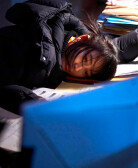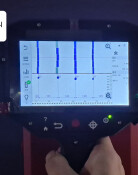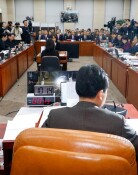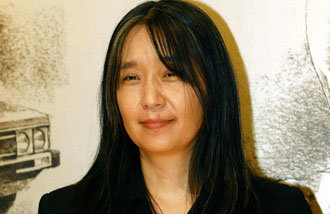National Museum Is a Hit

The number of visitors to the National Museum of Korea in Seouls Yongsan district broke the 400,000 mark yesterday in just the 16th day after the museums grand opening.
The second weekend after the opening saw and crowds of 30,000, daily.
What are the reasons for the museums popularity?
Some of the reasons are National Treasure No. 83, the Pensive Bodhisattva (Three Kingdoms7th Century), Treasure No. 86, The 10-story Gyeongcheonsa Temple pagoda (Goryeo, 1348), Treasure No. 191, the Gold Crown (Shilla, 5th-6th Century), and Treasure No. 287, the Baekje Gilt-Bronze Incense Burner (Baekje6th-7th Century) that are on display.
Other popular artifacts include National Treasure No. 70, the Korean script Hunminjeongeum (Joseon Dynasty, 1446), Treasure No. 240, a Yoon Doo-seoh self-portrait (Joseon17th-18th Century), Treasure No. 326, Lee Soon-shins sword (Joseon, 1594), Treasure No. 850, the Daedong Map (Joseon, 19th Century), and Treasure No. 904, a bronze helmet from ancient Greece (6th Century B.C.).
The Hunminjeongeum, which was being temporarily displayed at the rented Gansong Art Museum, has a steady stream of callers. It is because it is being considered a candidate for National Treasure No. 1 status.
Museum officials were particularly amazed that the Lee Soon-shin sword (198 centimeters in length) from Chungnam was so popular. Museum art researcher Lee Yeong-hun (archeology) explained, The 2-meter sword itself is attractive, but the recent craze over High Admiral Lee Soon-shin is the real reason for the swords popularity.
The model Daedong map (three meters by seven meters) on the tiles of the history room is not the original, but has many curious feet leaving their marks on it anyway.
The bronze helmet that marathoner Sohn Kee-chung received for a gold medal in the 1936 Berlin Olympics boasts a self-replenishing queue. Spectators who stare transfixed at the unique shape do double takes when the volunteering guide explains, It is a genuine relic, unearthed from Ancient Greece and dating back to the 6th Century B.C.
There are treasures that visitors unfortunately skim over, like Koreas greatest literary artist Kim Jeong-hees Sehando (Joseon, 1844). Many do not recognize it because it appears different from books. The Sehando illustrated in books is often only bits and pieces of it. On the real thing, there is a long postscript written in the left-hand comer. Display manager Choi Eung-cheon (Buddhist Art History expert) said, I think visitors look at the long postscript and mistake the work for something else.
There are some who mistake the 10-story Gyeongcheonsa Temple pagoda installed in the main corridor as the National Treasure No.2 10-story Wongaksaji Pagoda in Pagoda Park, Jongno. The shape is almost identical. Choi says, There are many grandpas who scratch their heads in front of the pagoda and say when did the Wongaksaji pagoda come here?
Kwawg-Pyo Lee kplee@donga.com







